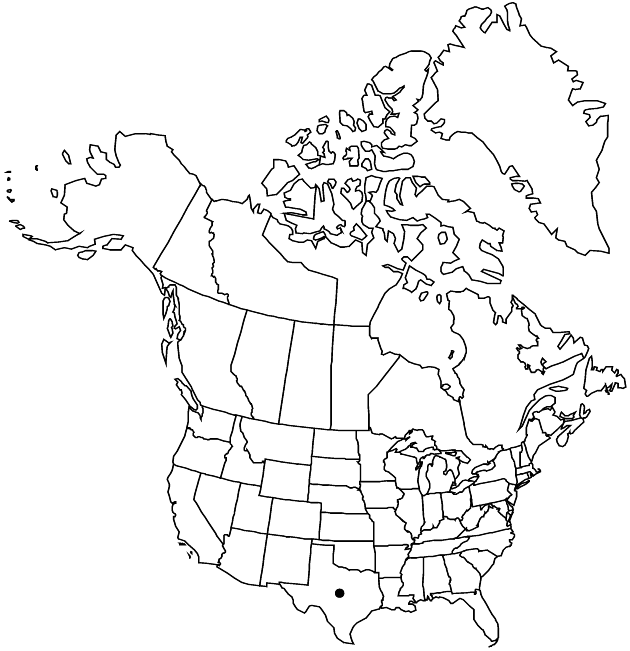Ambrosia cheiranthifolia
in W. H. Emory, Rep. U.S. Mex. Bound. 2(1): 87. 1859.
Perennials or subshrubs, 10–30+ cm (rhizomatous and/or soboliferous, colonial). Stems erect. Leaves opposite (distal sometimes alternate); petioles 0; blades lanceolate or lance-elliptic to lance-oblong or oblanceolate, 20–50 (–70+) × 8–12 (–25+) mm, rarely ± pinnately lobed (lobes ± deltate), bases cuneate (then rounded), margins entire or toothed, abaxial faces densely strigose (silvery gray), adaxial faces strigillose. Pistillate heads clustered (in axils), proximal to staminates; florets 1 (–2). Staminate heads: peduncles 1–4+ mm; involucres cupshaped (sometimes with black nerve in each lobe), 3–4+ mm diam., strigillose; florets 8–18+. Burs: bodies ± pyriform to ± globose, 2–3+ mm, glabrous or strigose, spines (1–) 3–5+, scattered, stoutly conic, 0.4–0.8+ mm, tips straight (often each with black nerve). 2n = 72.
Phenology: Flowering Jun–Nov.
Habitat: Seasonally wet clays or sands, scrublands
Elevation: 10–30+ m
Distribution

Tex., Mexico (Tamaulipas)
Discussion
Selected References
None.
Lower Taxa
"strigose" is not a number. "glabrous" is not a number.